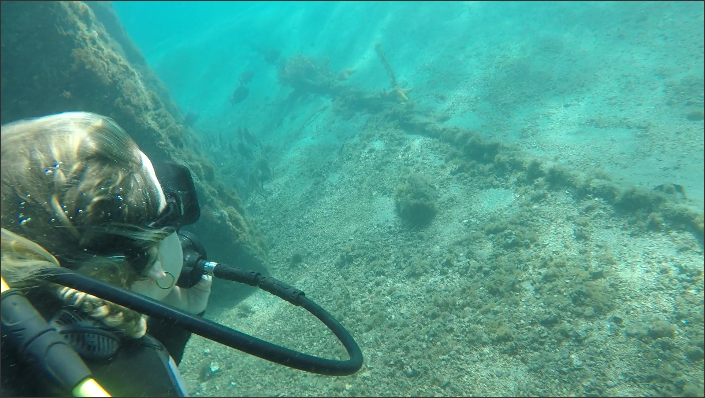SCUBA Report: Blue Heron Bridge - West Palm Beach, FlorIda
Check out the video footage of our dive:
Blue Heron Bridge (or Phil Foster Park) in West Palm Beach, Florida was voted the #1 dive spot in the world in 2013 by Sport Diver Magazine. Over the holidays, I had the chance to dive this magnificent spot twice and I can absolutely see why the dive community speaks so highly of this wildly accessible, super fun, and safe dive spot. The water here is warm (>70 degrees) most parts of the year (the water was a balmy 75 degrees for our two dives during the last week of December). This area is tidal and the currents can be dangerous during peak flow. Sources spotted recommend getting in the water no earlier than an hour before high tide and getting out no later than an hour after. The current runs north (towards the shore entries) as the tide is coming in, and away from the entries as it is going out. We followed this schedule and it worked out great for us. Depths are shallow at 10-20 FT. I recommend split fins for this dive. I dove with both split fins and jet fins and ended up kicking up more sediment with jet fins as I maneuvered the shallow water. Snorkeling this spot is totally worth it, if you’re not SCUBA certified. Visibility was excellent during both of our dives.
Dive Resources
Blue Heron Bridge Tide Table
Blue Heron Bridge Marine Conditions
GPS: Phil Foster Park, 900 Blue Heron Blvd, Riviera Beach, FL
Force-E Scuba Centers, Riviera Beach
GPS: Force-Scuba Centers, 155 Blue Heron Blvd, Riviera Beach, FL
Blue Heron Bridge Dive Card
https://amzn.to/3RFIP6K (Amazon Affiliate link)
Since we were flying in from Boston, MA we chose to rent most of our gear, sans masks and fins. I flew my BC, two sets of masks and fins, hood, regulator, and undersuit (1.5mm) in checked luggage. I went over the 40# weight limit on my flight down - be extra careful about weighing your bags. Even without lead, scuba gear exceeds a 40# checked bag limit quickly. The additional fees for an overweight bag were steep. Check out your airline’s specific checked bag policies if you’re considering flying your bags down.
Force-E Scuba Riviera Beach
Force-E Scuba Centers Riviera Beach location is within site of Blue Heron Bridge. This location is an incredibly well run dive shop. For around $125 total, they had my partner in a full rental set of gear, me in a 3mm wetsuit, lead, aluminum 80 CF tank, and a dive flag for safety. If you’re changing your wetsuit or tank setup up (like me - I usually dive in the cold northeast with steel tanks), I would recommend starting out conservatively weight-wise and bringing along some extra from the dive shop in order to dial yourself in. Force-E wasn’t stingy about throwing a few extra pounds our way.
Our rental gear worked flawlessly during both days that we dove there. Their gear is well maintained and I feel that the prices are very reasonable. Force-E Riviera also carries a full inventory of dive equipment for sale. They were able to help me out with a new set of fin straps after one of mine suffered a breakage, setting me back $9. Not bad.
All I could think of as soon as we pulled into the parking lot at Phil Foster Park is that we reached the Mecca of diving. The front area of the parking lot was full of divers that were ready for slack tide to roll around.
Most divers dive the east side of the bridge, but after parking and suiting up we entered on the east side (closest to the way we came from Force-E). Our first day, we spent the whole day exploring the pilings of Blue Heron Bridge and the Fishing Pier. We saw all kinds of fish congregating around the bridge structure: parrot fish, sheepshead, spadefish, angelfish, one or two barracudas, starfish, and more. The current is stronger at this part of the site. Stay on the snorkel trail to the south of the diver entry areas if current bothers you.
Our second day, we spent more time exploring under the bridge, then headed down the snorkel trail. The snorkel trail didn’t disappoint. The current was calm and the depths were shallow allowing us to spend what seemed like hours underwater (~15’). Artificial structures (statues of hammerhead sharks, overturned shopping carts, a sunken center console boat, etc.) have been placed all along the trail to serve as habitat for all kinds of sea life. We spotted an even greater variety of common warm-water fish, a 6’ morray eal, some exotic fish (such as a flying gurnard), and even a spotted eagle ray at the end of our dive. I was seriously impressed. I’ve heard that manatees and sharks can also be seen at Blue Heron, but we didn’t see any on either of our dives.
Blue Heron Bridge at Phil Foster Park is easy, fun, and rewarding for even the newest divers. I really recommend checking this spot out if you’re in the area. Blue Heron Bridge has something to offer every diver.



